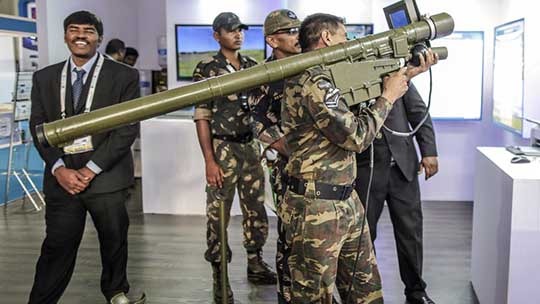On an industrial estate in Hyderabad in south India, work is underway on developing advanced technology that replicates the experience of driving a tank through a war zone or using firearms against enemies in jungle terrain.
Zen Tmilitary kitmilitary kitmilitary kitmilitary kitmilitary kitechnologies is a two-decade-old Indian company that designs and manufactures training equipment used by the country’s armed forces, including flight, combat vehicle, and hand grenade systems.
But India is keen to see firms designing and building more home-grown military equipment beyond simulators.
India is one of the world’s largest importers of weapons and manufacturing is still at a nascent stage, but there are strides being made in the defense sector as the country finally starts to try to break away from its dependence on imports.
“For the first time in the history of Indian defense procurement the importance of design and development has been recognized by the ministry of defense,” says Ashok Atluri, the managing director of Zen Technologies, who is very optimistic that India can transform itself into a top producer of weapons. “This is going to ensure huge inflow of funds into research and development and will ensure that the scientific talent in India is engaged in developing cutting-edge technologies in defense. India can become a hub for trail-blazing defense exports from being a destination for outdated defense equipment.”
He says Zen has its own plans to “grow its exports business and emerge as a reliable indigenous defense player for supplying products to the Indian and global market”.
New Delhi has hugely ambitious targets to reduce its defense imports. Narendra Modi, the prime minister, has said that its aim is for India to manufacture 70 per cent of its weapons at home by 2020. Currently, it relies on imports for about 70 percent of its equipment, which is extremely costly for the country.
Mr. Modi is pushing for India to become a global manufacturing center under his “Make in India” campaign, and the defense and aerospace industry is a key part of this. Two years ago, India opened up the defense sector to 49 per cent foreign direct investment (FDI) from a previous limit of 26 percent. In June this year, the government liberalized the rules even further, permitting FDI of 100 per cent in the sector.
The role of the private sector in India’s defense industry is growing and Indian firms are eager to cash in the opportunity.
“Tata, Mahindra, Hero and Reliance are spending a lot on enhancing the defence manufacturing in India, bidding for big contracts and partnering with foreign companies to assemble or manufacture in India,” says Ajay Pal Singh, who used to work as a scientist for India’s Defence Research and Development Organisation before becoming an entrepreneur.
Larsen and Toubro (L&T) and Godrej are other Indian firms that have entered into weapons manufacturing.
But Mr. Singh says that for the time being at least Indian armed forces need to keep buying from abroad to “stay modern”.
Over the next eight to 10 years, about US$200 billion is to be spent on defense capability expansion, and a further $150bn on ramping up homeland security capability, according to Roland Berger Strategy Consultants.
“India is seeing significant growth in the aerospace and defense opportunity currently,” says Wilfried Aulbur, the managing partner for India at Roland Berger. “On an extremely broad level, this growth is due to the combination of three major factors, which are sustained geopolitical threats, increasing internal security threats and significant spends needed to address the need for new equipment as well as for addressing obsolescence related issues.”















